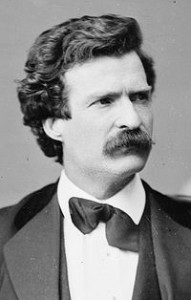 [contextly_auto_sidebar id=”hLRQi16APGHGAa7vr6agsGJdgdO8X6ef”]
[contextly_auto_sidebar id=”hLRQi16APGHGAa7vr6agsGJdgdO8X6ef”]
IT’S taken a while, but as rents and real estate prices have surged over the last few years, the issue of living space for artists has started to get the attention it deserves; David Byrne and Patti Smith have helped shine a light on the plight of creative folk in New York. A new story by fiction writer Catherine Lacey highlights the problem and describes a solution she and her posse made work for them: running a New York bed and breakfast.
MY experience with a small cooperatively owned business offers one possible solution, especially for those with a craft or passion project vying for their attention. The only reason I can see why artists aren’t starting more worker co-ops is the challenge of getting such businesses off the ground.
She makes clear that her group was not a bunch of hippie layabouts that the reader might imagine; they were a group of dedicated, pragmatic artists willing to work hard to lead the creative life. Lacey has a novel coming.
ALSO: There’s also a documentary on the subject coming, called Miracle on 42nd Street, about the Manhattan Plaza complex, where a number of actors and performing artists, including Samuel L. Jackson and Larry David, once lived. Director Alice Elliott has been nominated for an Academy Award. They’re currently (like most artists I know) looking for funding to complete the project.
FINALLY: We generally think of Mark Twain as one of the bearded and august elders of American literature, a white-suited, white-haired gentleman essentially born into the literary canon. But Twain struggled mightily as a young man in 1960s San Francisco. The writer Ben Tarnoff, who I met about a week ago to discuss his group biography of Twain’s circle, The Bohemians, has an excellent piece in the Daily Beast about how Twain’s formative experiences, especially his reliance on a group of fellow writers, can help guide writers today.
As I got to know Twain better, however, I discovered that the swaggering narrator of his sketches and books bore only a passing resemblance to the man himself. He projected an aggrandized likeness, a garish outer layer engineered for maximum publicity, like the sealskin coat and white suit he would later wear to make himself the center of attention. Underneath was someone who looked a lot more like me and the other young writers I knew: anxious, moody, paranoid.
Tarnoff’s book will interest anyone who cares about West Coast history, as well.

Here in Moscow, the city government is at the initial stage of creating an Arts Village, which will include not only workspaces, galleries, performance venues and storage space, but subsidised housing for artists and those involved in the performing arts.
The idea is to capitalise on the fact that around Kursky Railway Station (itself a real element of urban blight, with acres of waste land and rubble-strewn former goods yards) there are three thriving independent arts centres, including the popular and successful Winzawod and ArtPlay centres. (In fact ArtPlay seems a bit far away, as I cycle past it? But I’m sure they know what they are doing…?)
The intervening streets – which contain quite a few derelict buildings, underused storage spaces etc would be converted to living space for artists and performers, along with artists workshops. It’s all part of a belief that Russia has huge artistic potential which can prove to be a catalyst for other stuff that will make money (restaurants, hotels, clubs, venues etc).
No idea what the timescale is for all this, though :))